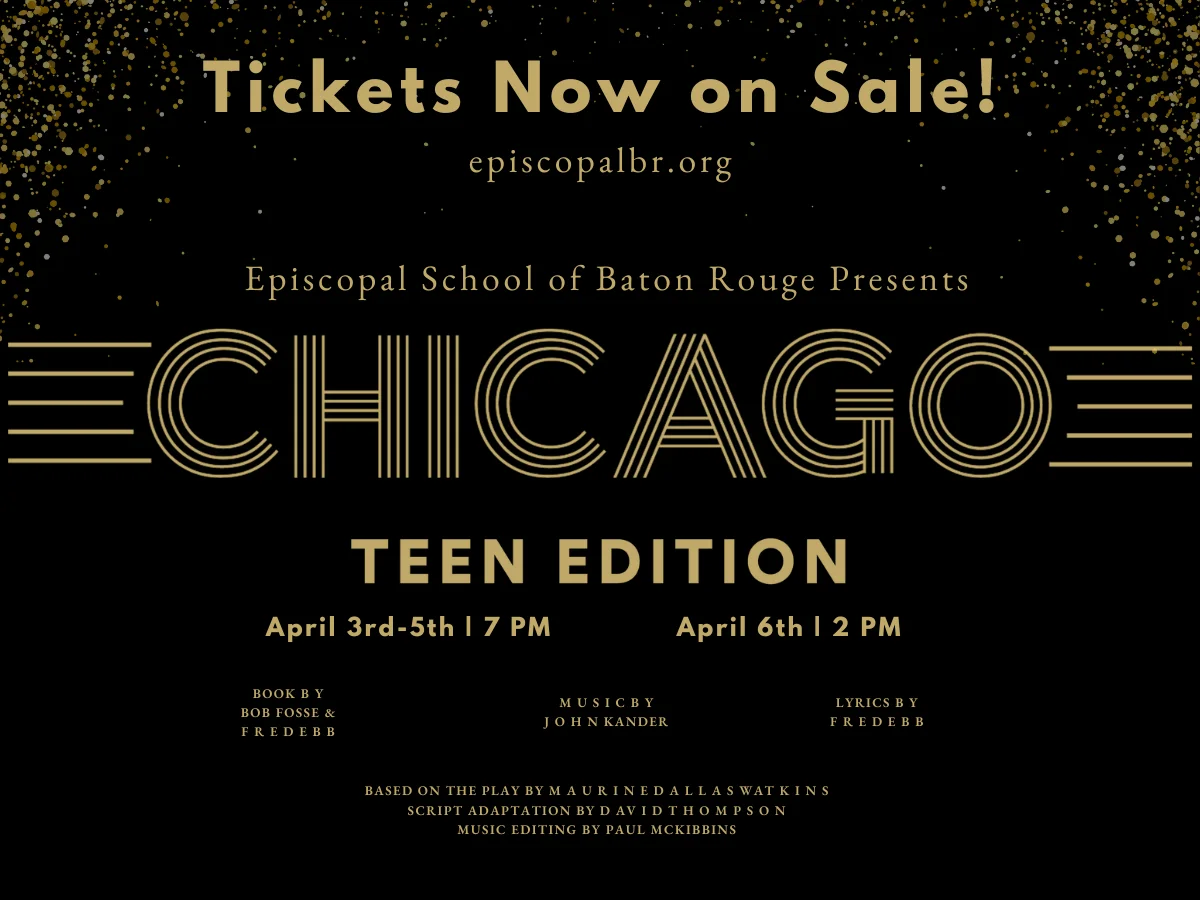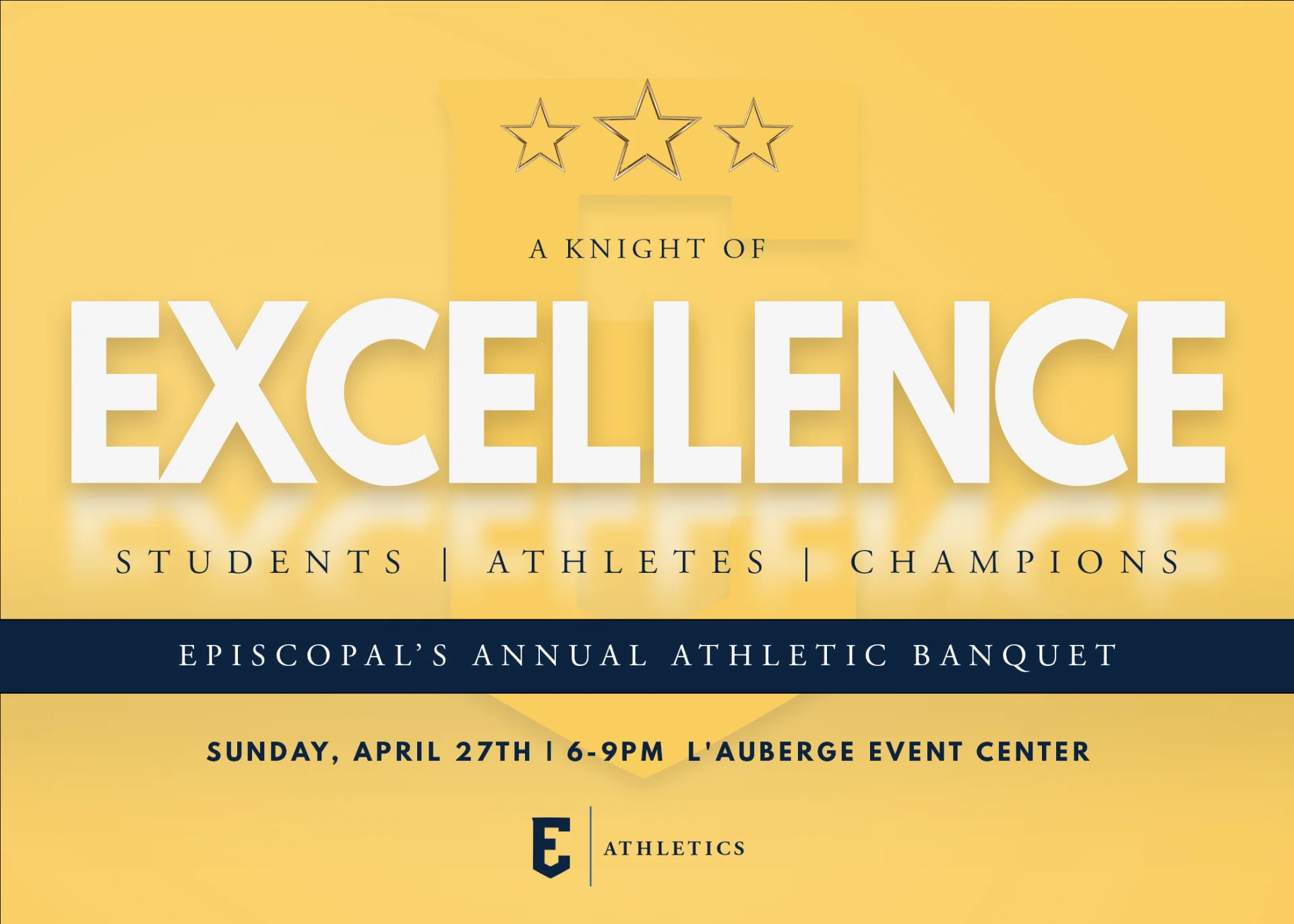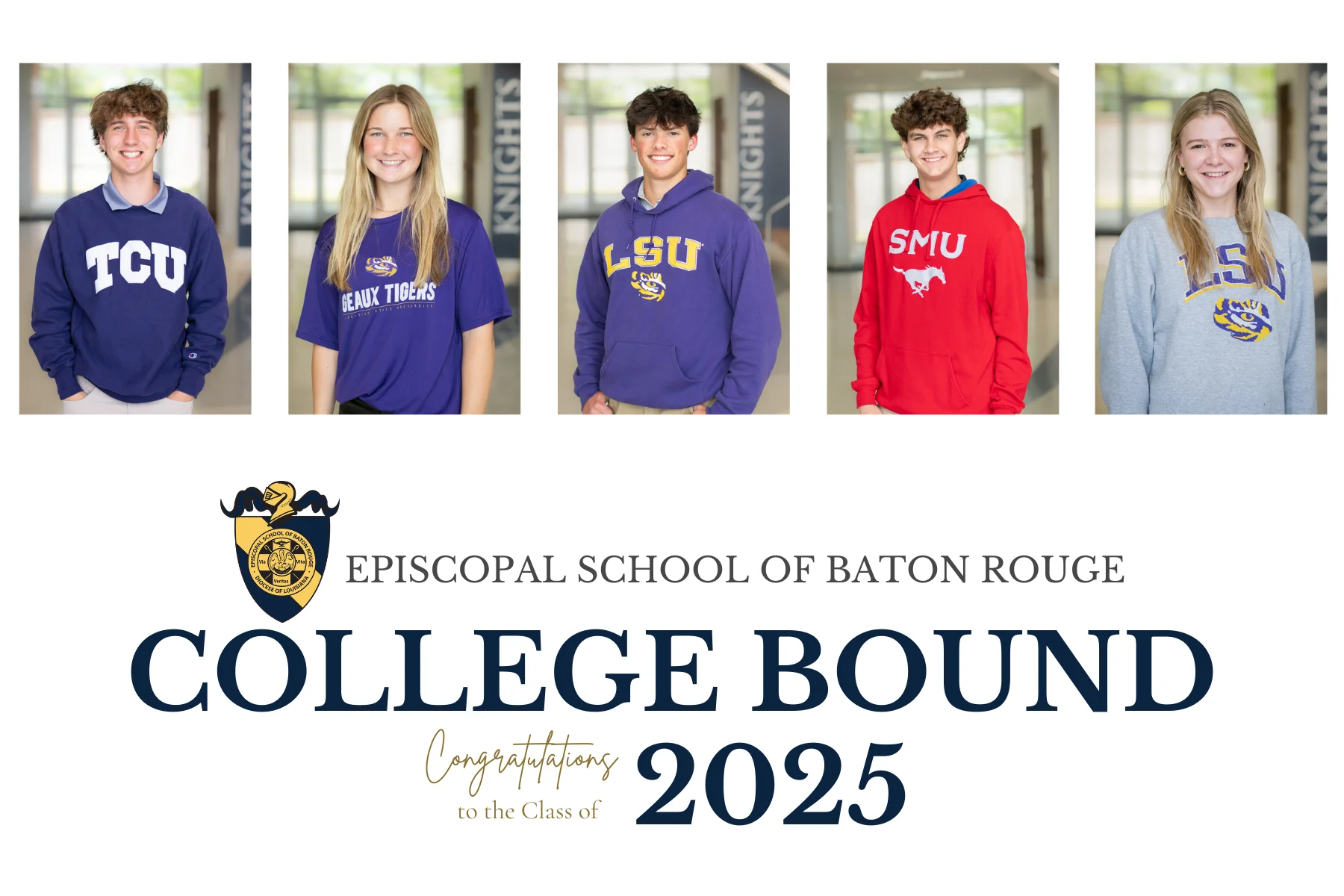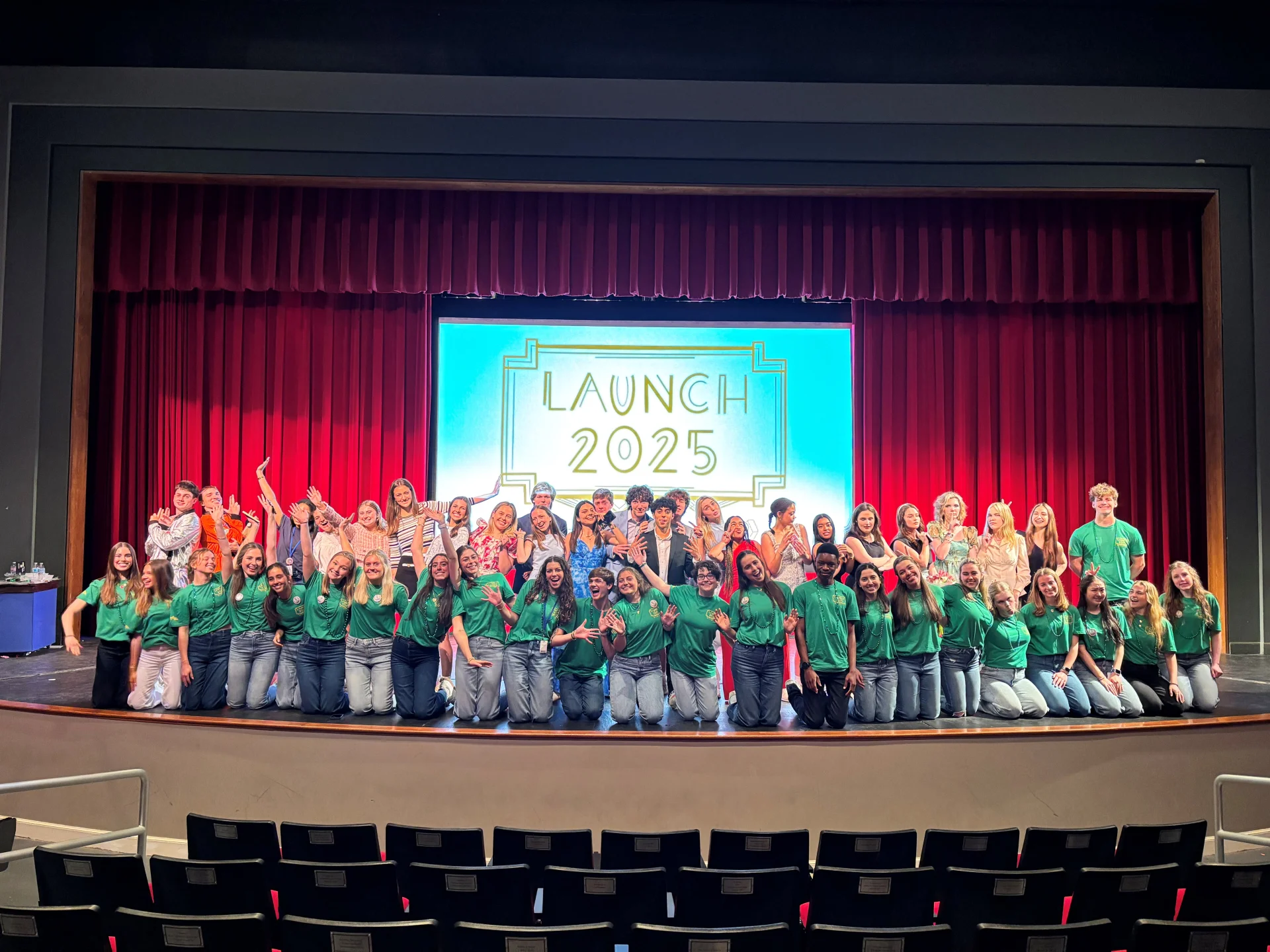- Admission
- Discover Episcopal
- Our Program
- Athletics
- Arts
- Spirituality
- Student Life
- Support Episcopal
- Alumni
- Parent Support
- Knightly News
- Contact Us
- Calendar
- School Store
- Lunch Menu
- Summer Camps
- Knight Under the Stars
- Chicago Tickets
- PowerSchool Notice
« Back
Coloring the Campus with the Pulsera Project
March 21st, 2019

Maia Adams, Christine Myer, Addie Owens and Thomas Besselman have organized a cross-divisional project to raise awareness of issues in Central America.
One day earlier this fall, Addie came across “The Pulsera Project” online. She approached us about engaging with the project for the AP-WE service aspect of our AP Spanish class. We immediately were interested and thought that the project would be a great service project for the Episcopal community; a project which would help raise awareness and money for some of the prevalent issues in the Central American communities of Nicaragua and Guatemala. However, we had no idea how much teamwork, planning, brainstorming, and problem-solving would go into the execution of the project here on campus. We are greatly appreciative of all who have helped us on every step of the way, especially Dr. Alvarez who has shown us constant support and help. Looking back on the day when Addie came across the project makes us laugh, but it also inspires feelings of pride and excitement. Every day since September we have pushed ourselves in ways which we have never been pushed and have put together a project which is so much more meaningful and full of community than we ever would have imagined. And it has been totally worth it.
To give a little background on the project, El Proyecto Pulsera or the Pulsera project is a non-profit organization that partners with student-led groups around the US to sell Pulseras (AKA bracelets) made by artists in Nicaragua and Guatemala. The project allows for students in the US and families in Central America to become a part of an empowering experience. We chose to make this project more than just “selling” bracelets and more about sharing the values of the project to encourage global citizenship. A few of the values that we decided to focus on are poverty in Latin America, Solidarity v. Charity, the importance of Fair Trade, and awareness of global issues.


Soon after meeting with Mrs. Spencer and Father Skully we knew that we needed to make the project about more than just selling the Pulseras one day at lunch and then sending back the money. We needed to make the project meaningful, not only for us but also for the entire student body and faculty. We did some research on the Pulsera Project website and searched through their list of values and picked out a few of our favorites. We made it our goal to dive into the four values which we felt represented the project and what it stands for. We felt that these values would be beneficial and educational to share with the rest of the student body. On Monday, March 18, we presented to the upper school during our assembly time about each of the values and more about the project in hopes of not only promoting the sale but also sharing our passion about the foundational values with the student body. We also presented to the middle school during their morning meeting on Tuesday, March 19. Our goal was to demonstrate that the bracelets represent the values and the artists’ individual stories; they are not just a bracelet that one could buy anywhere.
Additionally, we wanted to involve all three divisions and turn what was first just going to be a sale, into what we decided to call “Pulsera Weeks.” Leading up to these weeks which are taking place right now on campus, until April 1st, we needed to get teachers and other students excited. We presented at the middle and upper school faculty meetings about the Pulsera Project and its values and proposed three tiers of involvement. The first level was the Pulsera Fan, a teacher who simply wanted to help promote the project verbally or by putting flyers up in their classroom or writing reminders on the board. The second level was the Pulsera Influencer, a teacher who was interested in teaching a short lesson which incorporated the values of the project. We helped the teachers who signed up to be Influencers by sending them suggestions for lessons which we handpicked from the Pulsera Project website. The highest level of involvement was the Pulsera Agent of Change, a teacher who was interested in doing a long term project or was interested in getting involved directly with the project and organization. We had 27 middle and upper school teachers sign up to get involved. We then made our priority to contact these teachers directly about their next steps. As teachers begin to teach their lessons covering a wide range of subjects and values, we are excited to see how the project continues to spread throughout the community.



Once we realized this was going to be an extensive project that involved almost everyone on campus, we knew that we had to do something in the advisories. Thomas thought of the letter writing activity and planned it out. The activity was completed by students on March 21st. The advisory was given a bio of an artist in either Nicaragua or Guatemala. The artist’s bios were translated into English as a supplement to the Spanish bios so that all of the students and advisors could engage in the activity regardless of their fluency in Spanish. However, the students who understood Spanish were encouraged to help write the advisory’s letter in Spanish which provided an opportunity for Episcopal students that speak Spanish to take the lead of the advisory activity. Students then wrote a letter in either English or Spanish to the artist that they recently read about. Student letters ranged from questions to encouragement to life comparisons between the US and Central America. Each letter will be sent to the artist along with a picture of the advisory and advisor. We hope that this advisory activity will help further illustrate the positive aspects of collaboration so that we may get to know the culture and lifestyles of people living in these Central American communities, with the goal of helping them gain the resources they need to live better lives and creating awareness about global issues in schools around the United States.
Both the middle and lower school have been an integral part of the Pulsera Project success at Episcopal. We divided and conquered and Maia and Christine got in touch with Mrs. Smith and Mrs. Henderson about involving the lower and middle school in the sharing of the project’s values and also in the sale. Mrs. Smith mentioned to us that Mrs. St. George, the eighth grade World Geography teacher was interested in incorporating the project somehow in her classes and Mrs. Henderson told us to talk to Mrs. Boudreaux and the fifth grade teachers, since we came to the conclusion that many of the topics from the project may be too mature for lower school students below fifth grade to grasp. We formulated a plan with both Mrs. St. George and Mrs. Boudreaux to involve the lower divisions in the project. With Mrs. St. George’s eighth grade classes, we planned a lesson that taught and created awareness about schooling in Nicaragua and how many families cannot afford to send their children to school because they need to work during the day, or cannot afford the uniforms required for school. We centered the lesson around larger discussion questions which inspire thinking such as whether or not education is a natural right, or if there were any possible solutions to make education more readily available and affordable for these Nicaraguan families. The entire Pulsera Team went and taught the lesson for one block and Mrs. St. George continued the lesson with the rest of her blocks. Additionally, we went and spoke to the fifth graders about the values and the project. We were pleased when a group of fifth grade students came forward after our presentation and showed interest in being part of a fifth grade team of representatives for the Pulsera Project. Our hope is to meet with these students and collaborate with them so they can act as leaders and promoters of the project and its values in the lower school. The fifth grade has already bought 200 Pulseras and will be selling them in their Global Market this April.


The Pulsera sale started Monday the 18th and will continue through April 1. We will have 2 more sales for upper school in front of the clock tower in the quad during lunch on Tuesday, March 26 and Friday, March 29. We will also be having a middle school sale on Tuesday, March 26 in the rain garden during their morning break. Our goal is to inspire members of the student body to spread awareness and help others. Economic aid is just one part of the mutual exchange from The Pulsera Project which also includes the sharing of knowledge, ideas, and life experiences for the benefit of all. On top of the impact abroad, pulsera sales change the lives of students in the U.S. as well, educating them about life in Central America while cultivating student leadership and awareness of global social issues. Each bracelet represents the values of the project and the hard work and creativity that was put into each work of art.
Please consider coming out and purchasing a Pulsera for $5 or asking us a question about any aspect of the project and its values! Thank you for all of your support already. We are looking forward to hopefully selling all of the 600 Pulseras that were sent to us and possibly another entire shipment which we have requested. Our collective support at Episcopal will go towards empowering nearly 200 Central American artists by providing fair trade jobs, housing programs, scholarships, healthcare, and more!
Maia Adams
Maia Adams, an Episcopal Junior and AP Spanish student has always been passionate about the Spanish language and culture. She has been to Chile two times with the Episcopal exchange program and has gone back a third time with her family. She is a member of the Episcopal chapter of the Spanish National Honors Society, an Episcopal Writing Fellow, and a member of the Center for Service Learning Student Leadership Team. Maia grew up in New Mexico and moved to Baton Rouge in the midst of 5th grade. Growing up in two very different places is a part of her identity which she attributes to her open mind and love of exploration. She enjoys spending time outside, traveling, and learning about new cultures and ideas.
Thomas Besselman
Thomas Besselman is a current Junior at Episcopal. He came to Episcopal in 9th grade from St. Jude the Apostle Catholic School here in Baton Rouge. He has played Varsity Basketball for three years, is a member of the Center for Service-Learning Student Leadership team, Episcopal Chapter of the Spanish National Honor Society applicant, and a member of the Thesis Program. He enjoys spending time with friends and family, playing basketball, traveling, and exploring new cultures.
The Episcopal School of Baton Rouge 2025-2026 application is now available! For more information on the application process, to schedule a tour, or learn more about the private school, contact us at [email protected] or 225-755-2685.
Other articles to consider
 Mar27Episcopal Presents "Chicago: Teen Edition"
Mar27Episcopal Presents "Chicago: Teen Edition"Don’t miss the Upper School spring musical “Chicago: Teen Edition”! With dancing, singing, a true crime theme and a 12-piece professional orchestra, this PG-13 presentation is sure to impress. Shows run April 3-6—get your tickets today!
See Details Mar27Episcopal Announces "The Knight of Excellence" Athletic Banquet
Mar27Episcopal Announces "The Knight of Excellence" Athletic BanquetCelebrate Episcopal's top athletes at the Knight of Excellence on April 27th! Join us for an inspiring evening of awards, recognition and community.
See Details Mar26College Announcements 3.28.25
Mar26College Announcements 3.28.25Please join us in congratulating members of the Class of 2025 as they announce their college enrollment decisions.
See Details Mar25A Community of Learners Takes the Stage at LAUNCH Day 2025
Mar25A Community of Learners Takes the Stage at LAUNCH Day 2025LAUNCH Day 2025 celebrated student-driven research, innovation and a close-knit community of learners. See how seniors showcased their hard work, creativity and big ideas on stage.
See Details
Categories
- All
- Admission
- Athletics
- College Bound 2019
- College Bound 2020
- College Bound 2021
- College Bound 2022
- College Bound 2023
- College Bound 2024
- College Bound 2025
- Counselors Corner
- Episcopal Alumni
- Giving
- Head Of School
- Lower School
- Middle School
- Spirituality And Service
- Student Work
- The Teachers' Lounge
- Upper School
- Visual And Performing Arts
Recent Articles
- 03/27/25Episcopal Presents "Chicago: Teen Edition"
- 03/27/25Episcopal Announces "The Knight of Excellence" Athletic Banquet
- 03/26/25College Announcements 3.28.25
- 03/25/25A Community of Learners Takes the Stage at LAUNCH Day 2025
- 03/24/25Congratulations to the 2025 Newton Distinguished Faculty Award Honorees!
- 03/21/25College Announcements 3.21.25
- 03/21/25Chase Cresson to Play Football at Morehead State University
- 03/20/25Anna Kate Yale to Compete at Harding University
- 03/13/25From Museums to READBowl: Episcopal Students Embrace the Joy of Learning
- 03/13/25Expanding Academic Support: ARC Fellows Mentor Lower School Students











